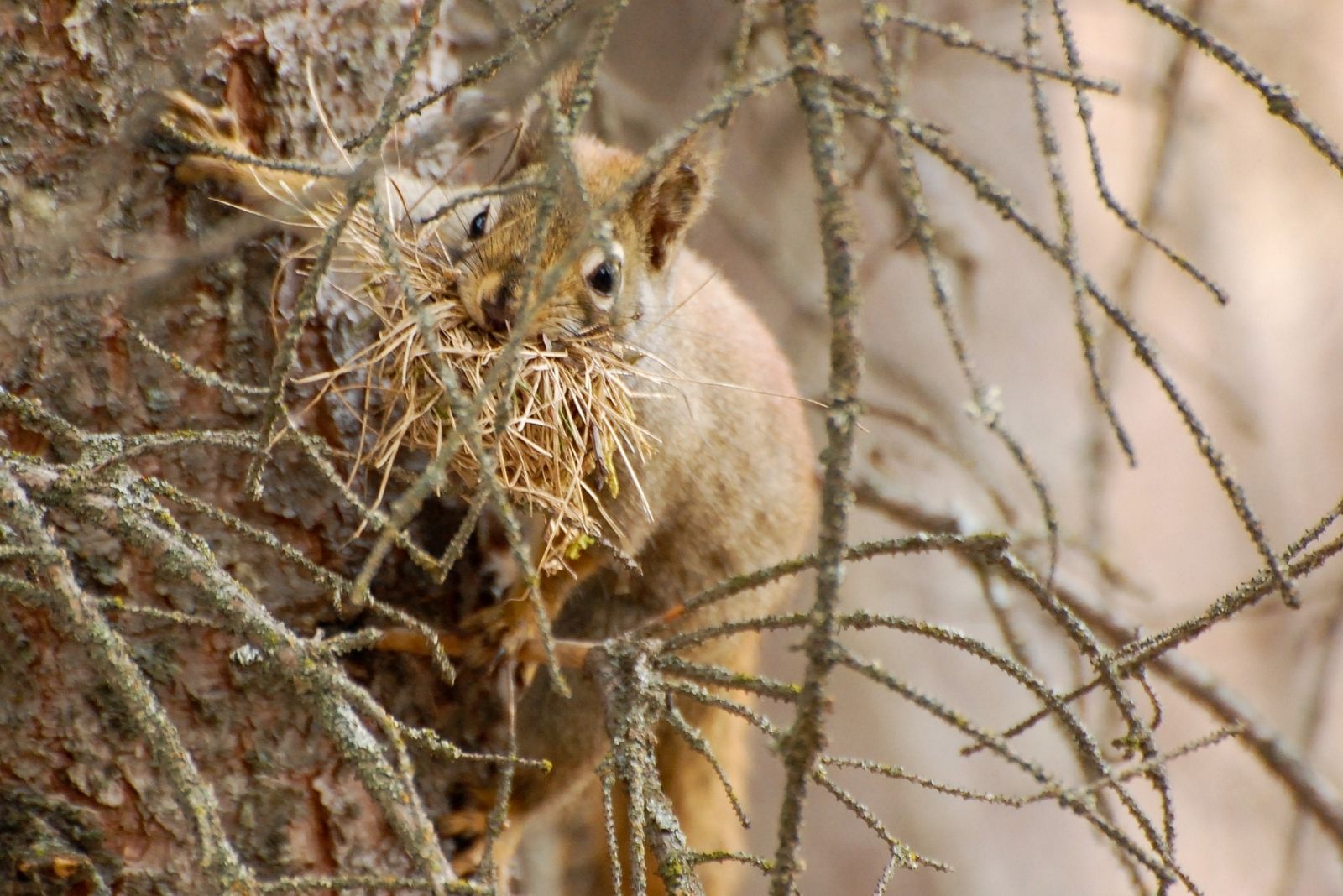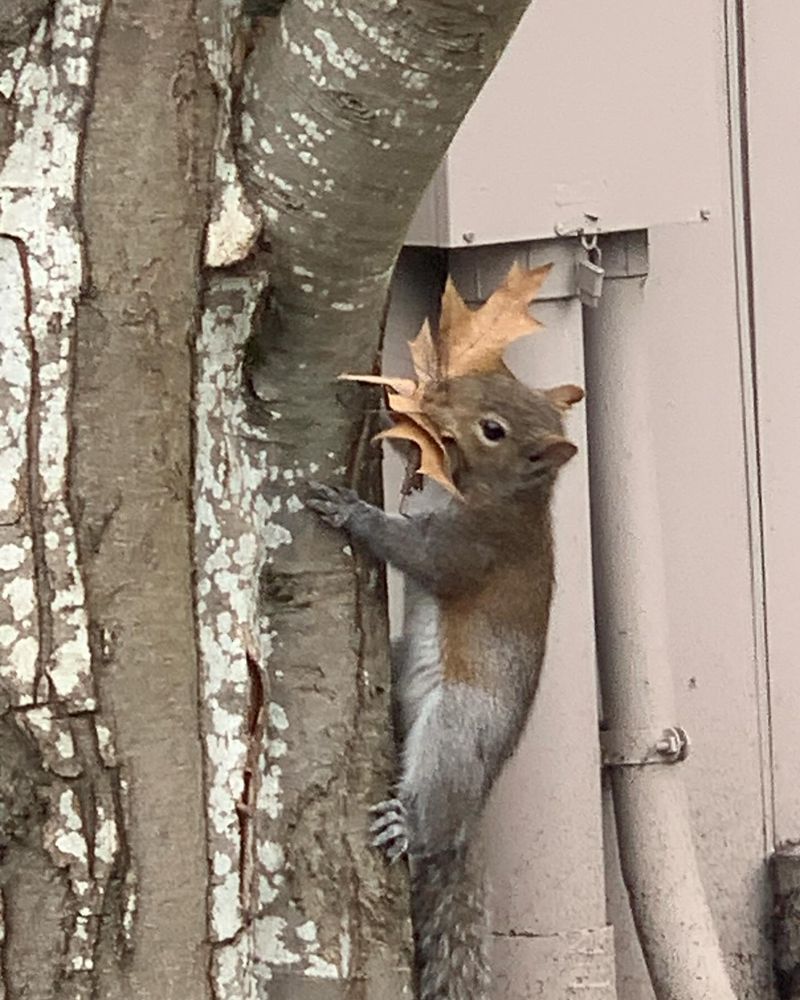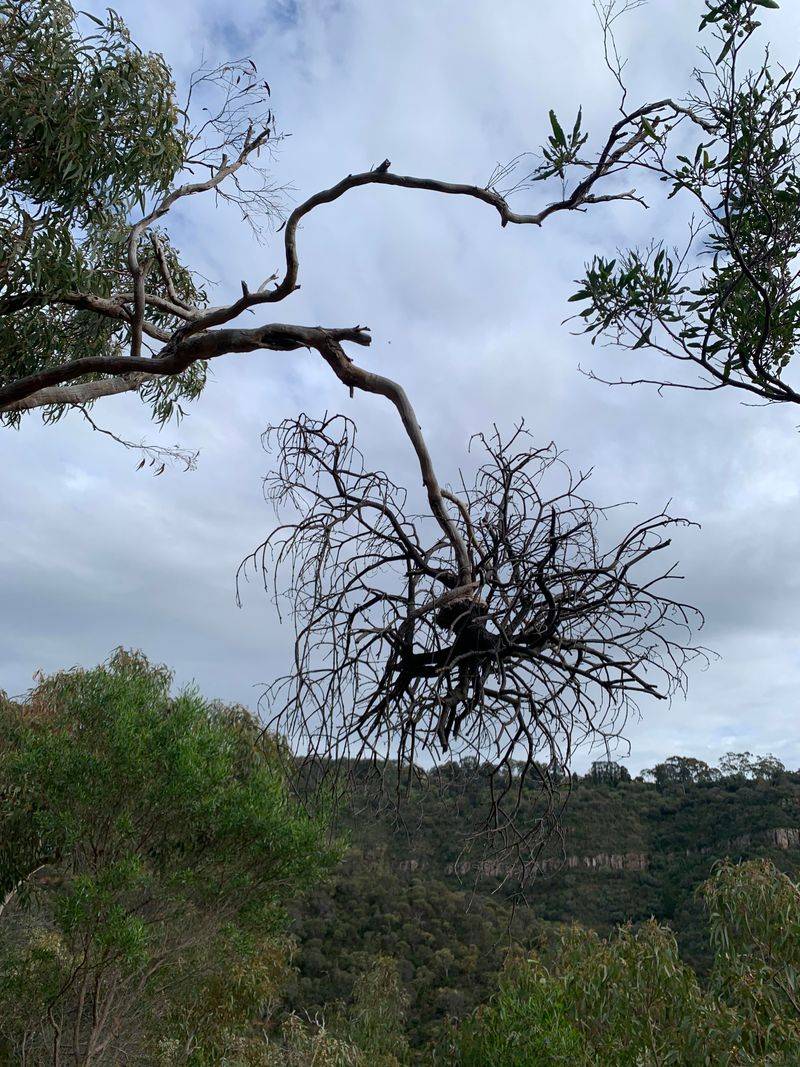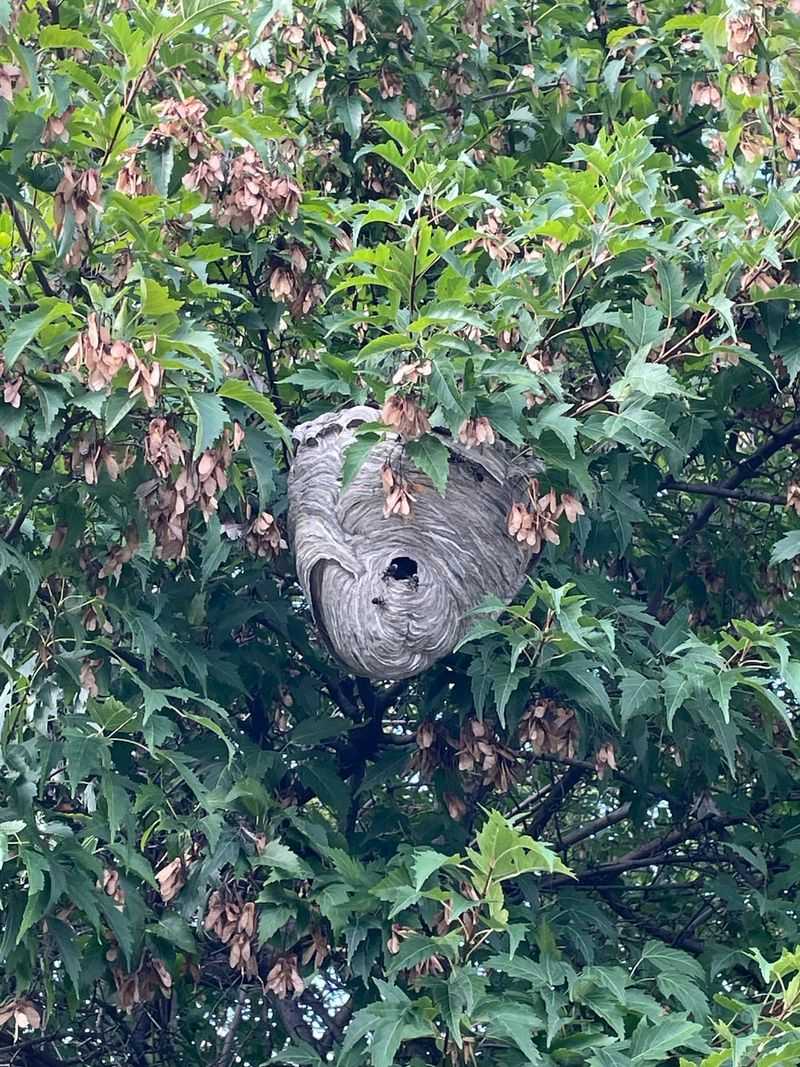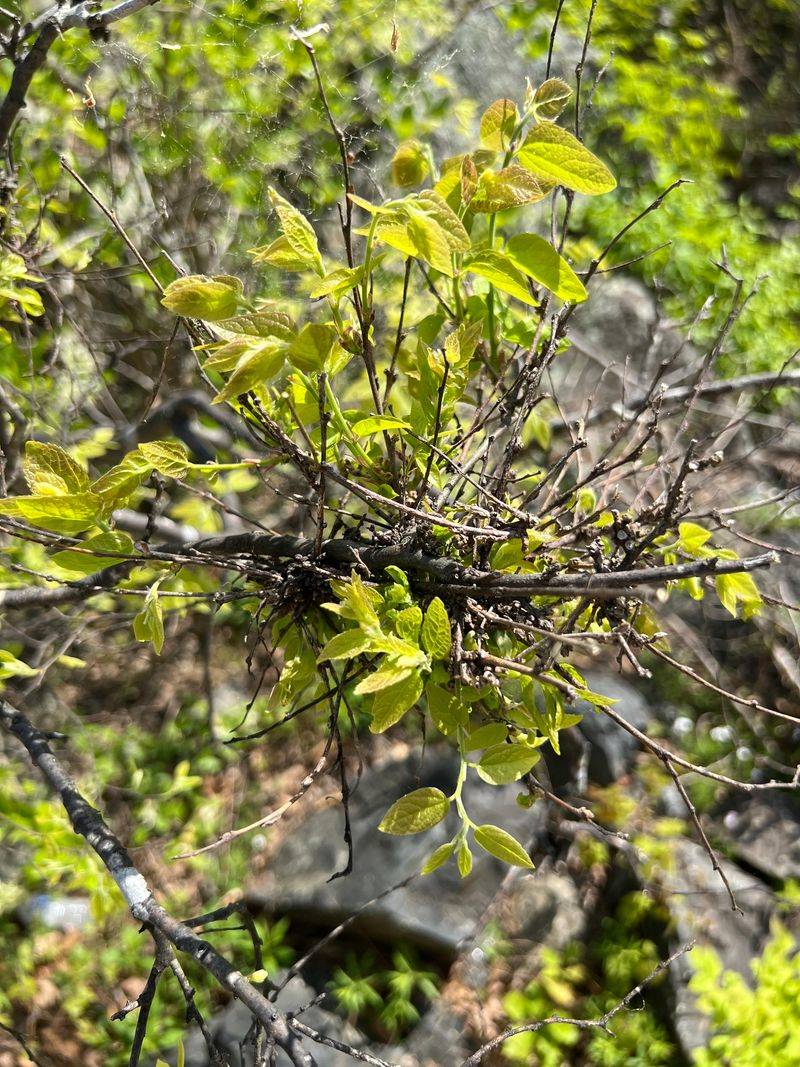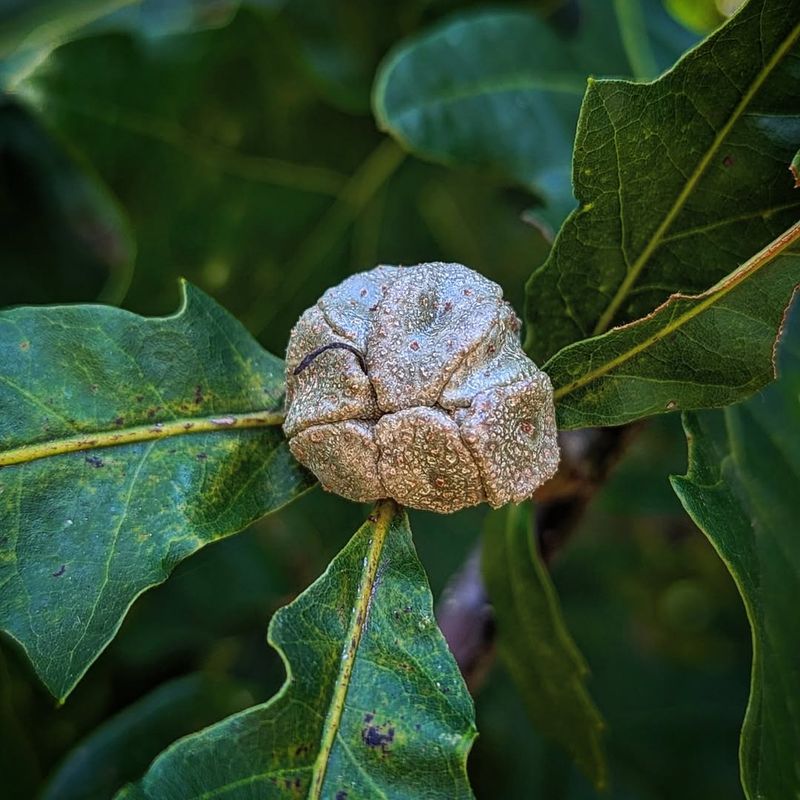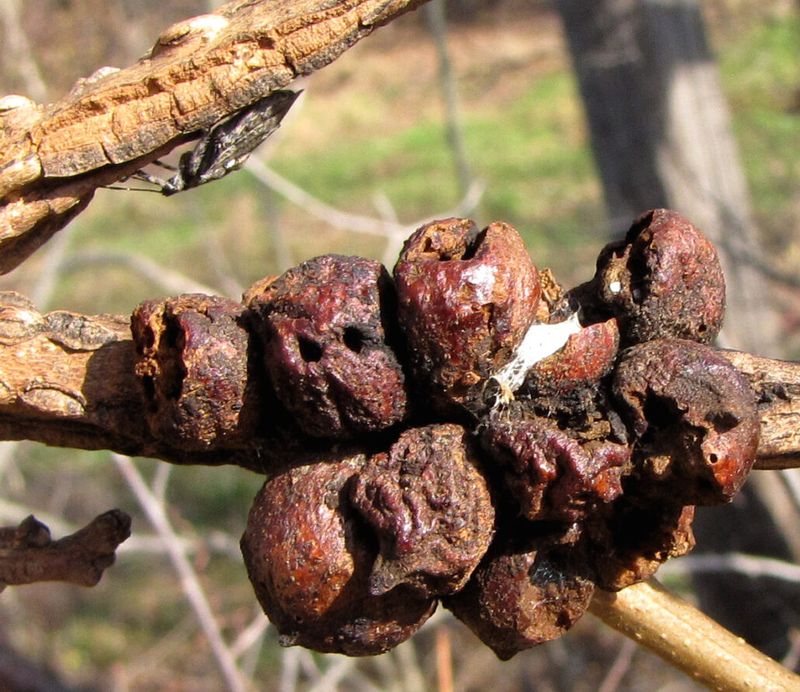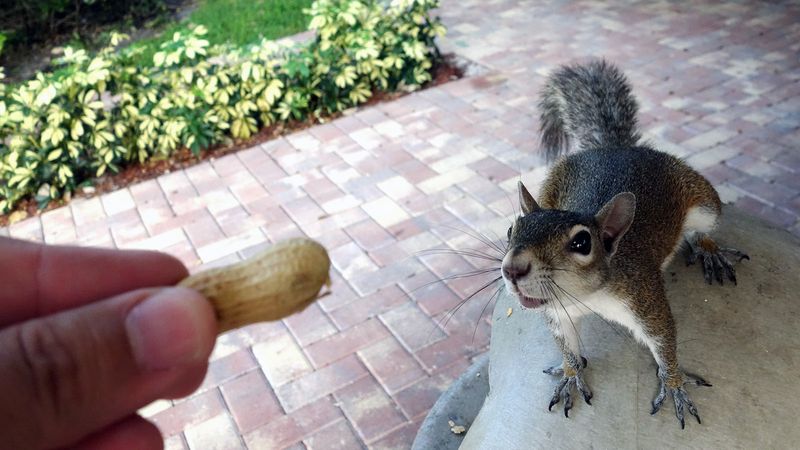If you’ve ever glanced up at a Maryland tree during fall or winter and spotted what looks like a messy bird nest made entirely of leaves, you’re not alone. Many people mistake these strange bundles for abandoned nests, but they’re usually something completely different.
Understanding what these leaf clusters really are can help you better appreciate the wildlife and natural processes happening right in your backyard.
1. Squirrel Dreys Are Cozy Winter Homes
Gray squirrels build these leafy homes, called dreys, to stay warm during Maryland’s chilly winters. Unlike bird nests made of twigs and grass, dreys use layers of leaves, bark, and moss woven together into a waterproof ball.
Most dreys sit high in tree branches, often where limbs meet the trunk. Squirrels stuff the inside with softer materials like shredded bark to create insulation.
You might see squirrels darting in and out during the day. A single squirrel often builds multiple dreys throughout its territory as backup shelters.
2. Mistletoe Clumps Grow As Parasitic Plants
Mistletoe isn’t just a holiday decoration—it actually grows wild on Maryland trees as a parasitic plant. It forms rounded clusters that look remarkably like leaf nests from below.
This plant taps into tree branches to steal water and nutrients. Oak, maple, and tulip poplar trees commonly host mistletoe in our region.
During winter, mistletoe stays green while surrounding leaves fall, making it stand out. Birds spread mistletoe seeds after eating the berries, which is how new clumps appear.
3. Wasp Nests Sometimes Hide Behind Leaves
Bald-faced hornets and other wasps construct paper nests that can get wrapped in leaves as branches grow. From the ground, these look like jumbled leaf balls stuck in trees.
Wasp nests are made from chewed wood pulp mixed with saliva, creating gray papery walls. Leaves may cling to the surface or accumulate around it naturally.
By late fall in Maryland, most wasps have died off, leaving empty nests behind. These nests won’t be reused, so they’re generally safe to leave alone through winter.
4. Witch’s Broom Disease Creates Dense Twig Clusters
Witch’s broom is a plant disease caused by fungi, bacteria, or mites that makes branches grow in tangled, bunched-up clusters. These growths trap leaves and look like messy nests wedged in trees.
Affected branches sprout dozens of small twigs from one point instead of growing normally. The result resembles an old-fashioned broom, which is how this condition got its name.
While it looks alarming, witch’s broom rarely kills trees. Maryland gardeners often spot it on hackberry, cherry, and honey locust trees throughout the year.
5. Leaf Galls Form From Insect Activity
Certain wasps and mites lay eggs on tree leaves, causing the plant to form abnormal growths called galls. When multiple galls cluster together, they create what looks like a ball of crumpled leaves.
Oak trees in Maryland frequently develop leaf galls during spring and summer. The tree tissue swells around the insect larvae, providing them shelter and food.
Galls come in many shapes and colors, from round balls to spiky clusters. Most are harmless to the tree’s overall health and eventually dry up and fall.
6. Leaf Clusters Trapped By Spiderwebs And Debris
Sometimes nature just gets messy. Strong winds blow leaves into tree branches where they snag on spiderwebs, twigs, or rough bark and pile up into ball-shaped clumps.
Spider webs are surprisingly strong and sticky, especially the large orb webs common in Maryland gardens during late summer. Leaves stick to these webs and accumulate over time.
I’ve watched these leaf piles grow bigger after storms, as more debris gets caught. Eventually, winter winds or rain break them apart and scatter the leaves back to the ground.
7. Eastern Gray Squirrel Leaf Caches Store Food
Squirrels don’t just build dreys for shelter—they also create smaller, temporary leaf bundles to hide food. These caches protect acorns and nuts from rain and other animals searching for meals.
Food caches are usually smaller and looser than dreys. Squirrels remember where they stashed hundreds of nuts throughout Maryland’s forests and neighborhoods, returning to dig them up later.
Many forgotten caches eventually sprout into new trees. Oak and walnut saplings often appear in unexpected places thanks to squirrels planting them accidentally through their caching behavior.

